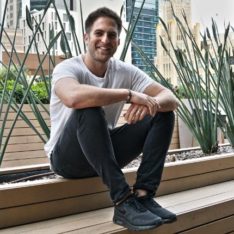The strategist of the future is hybrid – don’t get left behind
Forget silo disciplines, today’s strategist must be truly hybrid in order to survive and thrive, says Bohdi Lewis, who explains in this guest post how people can bridge the gaps.
As a strategist in an agency, your role is to take a brand challenge and distil it into something meaningful and actionable.
This means having the ability to step back and think laterally to firstly find the right [insert problem] to solve, followed by being able to succinctly articulate the [insert brand promise], followed by identifying a set of [insert category and audience insights] that all together lead to a strategic proposition to steer thinking to a unique and compelling idea. Simple right? Wrong.
This classic linear process has certainly stood the test of time, leading to countless award-winning communication ideas and executions, but in today’s increasingly connected and data-driven world, there’s been a well-documented shift towards the need to deliver more personal brand experiences versus the more passive mass communications of the past.
And then there’s the mammoth explosion of new channels needing to be carefully planned and integrated, and new creative formats born out of the rising dominance of mobile, and completely new technologies like VR and cognitive computing to explore and stay on top of.


so basically Bohdi, you’re saying that the strategist of the future is somebody just like you?
Hey Bohdi – great article, thanks for sharing. Ignore people like the individual above – they’re simply a reflection of the cynical old guard within our industry who can’t quite deal change.
Thanks for a practical insight. As one of the three founding planning directors in this country (1979), trained by the illustrious Stephen King and George Clements, I find it amusing that this concept of a planner being – by skill and avocation – a holistic, broad and inquisitive thinker; media agnostic (in an ever changing market); and up to date with consumer context and connections, is very reassuring.
The perspective and discipline has not changed – just the jargon and the availability of good data to work with.
Your on the right track, Bohdi. I hope it gets traction with clients.
Back in the January 1849 issue of Les Guepes, Jean-Baptiste Alphonse Karr coined the epigram “plus ça change, plus c’est la même chose”.
More than a century and a half later it still holds true.
Couldn’t agree with you more Bohdi. Great article and insight.
This article describe’s me pretty well and I can’t even get a call back from recruiters.
That’s why (I’m guessing) The people that fit this description are starting their own agencies and/or consulting to marketers.
Is there an industry issue in identifying these skills and rewarding them accordingly?